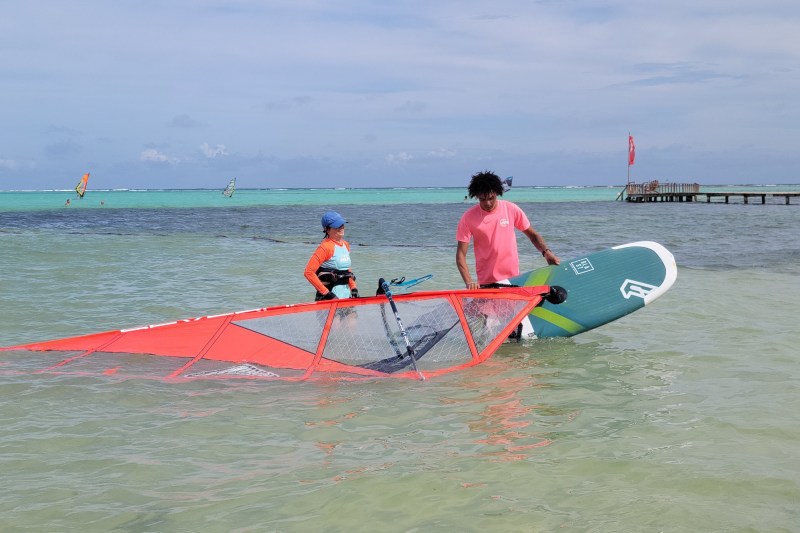
Bonaire — Wait, where? Bonaire is the “B” of the ABC Islands that include Aruba and Curaçao. Located on the south side of the Caribbean Sea, Bonaire is a Dutch island that seamlessly blends Dutch traditions with Caribbean culture and wild natural beauty that make this island a remarkably unique diamond in the rough.
If you’ve always wanted to visit the Caribbean but you’ve never really wanted the traditional touristy resort experience, Bonaire island offers you a unique opportunity to escape to a different kind of tropical getaway. Are you ready to get away in a whole new way?
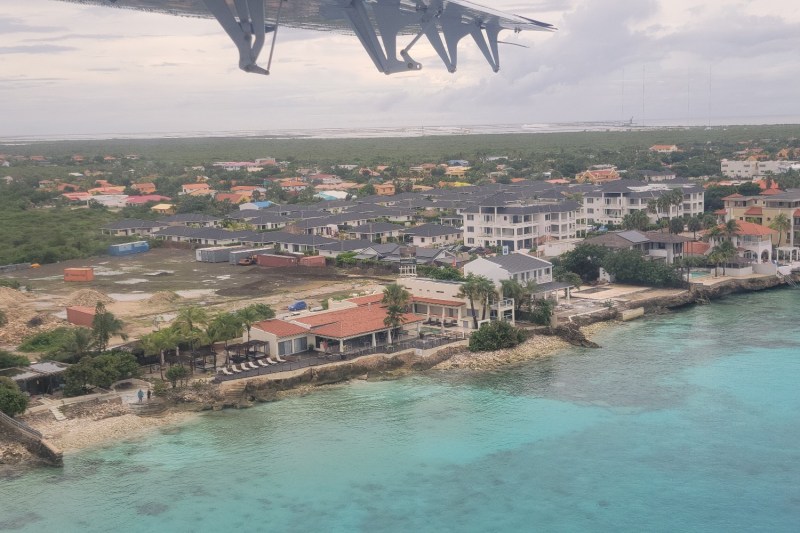
First, I must make an embarrassing confession
Until 2022, I had not even heard about this island. Though I had heard about Aruba and Curaçao, Bonaire completely flew under my radar until I finally made my way onto this incredible Dutch Caribbean island. What’s it like visiting this island?
Basically, Bonaire offers a portal to a very different side of the Caribbean. With few major brand-name resorts, fewer obvious “tourist trap” shopping malls, many more wide-open spaces, an ideal climate and geographic position that tend to shelter this island from the worst Atlantic hurricanes, and many more pristine beaches that open up to some of the Caribbean Sea’s most beautiful waters, Bonaire offers travelers the ultimate opportunity to really get away from it all and recharge with Mother Nature.
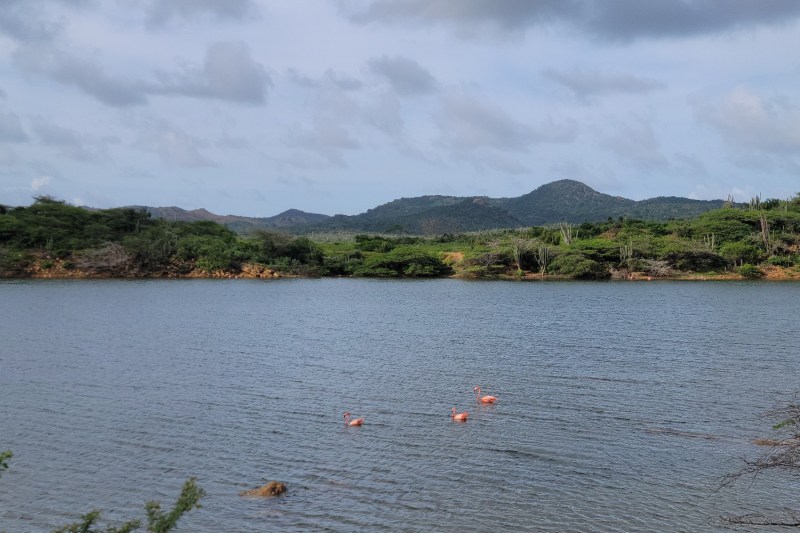
Now, let’s learn a little more about Bonaire
Americans may not be very familiar with Bonaire, yet Bonaire has played a critical role in the history of the Americas. Archaeologists have discovered human remains dating as far back as 3300 BCE on the island. The Caquetío tribe arrived there from mainland South America around 500 CE, and Spain began to colonize the ABC Islands in 1499. About seven decades later, Spain fell into the Eighty Years War against the Netherlands, and the Netherlands retaliated against Spain’s attack on Sint Maarten by attacking — and ultimately, conquering — Bonaire in 1636.
Under Dutch rule, Bonaire and nearby Curaçao became epicenters of the Transatlantic Slave Trade, and remnants of this brutal period can be found throughout the island today. Brief periods of British rule in the early 19th century brought a new wave of white settlers to the town now known as Kralendijk, yet the large population of enslaved Black and multi-racial residents soon began to fight for their freedom. The Dutch government finally relented with the 1862 Emancipation Regulation.
While Nazi Germany controlled the Dutch mainland during most of World War II, the U.S. and the U.K. took control of Bonaire and used this island as an air force base. Later in the 20th century, salt production and petroleum transportation became major drivers of Bonaire’s economy, and tourism began to take off once divers began to discover the largely unspoiled waters offshore. This has led to a fascinating yet tricky balancing act in which Dutch and local authorities have given Bonaire the most protected public lands and open waters of the ABC Islands, but they’ve also gradually allowed for a little more development to bring more tourists here.
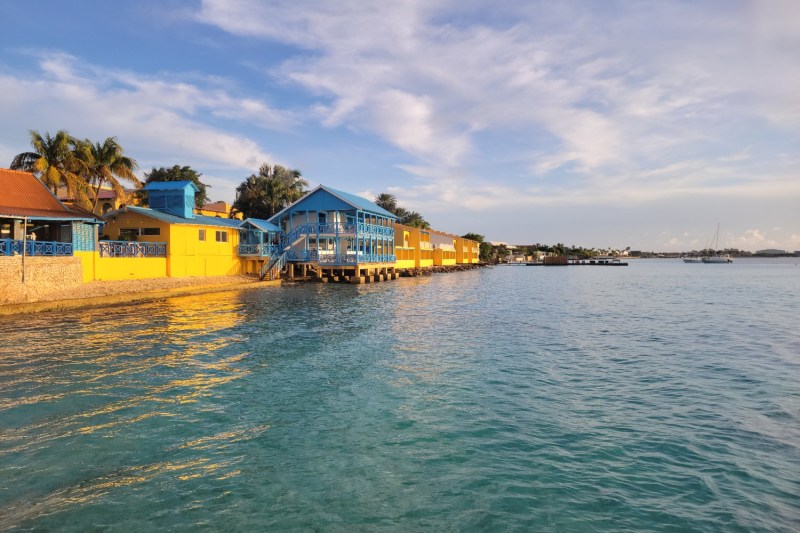
What’s it like to actually visit Bonaire and stay here?
While I have zero interest in denigrating any other Caribbean island, I do think it’s worth noting how so many of us are instantly drawn to the usual name-brand megaresorts when we come this way. On Bonaire, we’re really pushed to escape the box, broaden our horizons, and try plenty of new experiences.
Though there are some high-end options among Bonaire resorts these days, I simply did not find the rows of megaresorts here that are more common on other islands, even including Bonaire’s fellow Dutch Caribbean island of Aruba. Don’t get me wrong — There’s plenty for travelers to do across the island, including exploring Bonaire’s capital city of Kralendijk. This is by far Bonaire’s largest city, so it’s where I found the most hotels, restaurants, bars, and boutiques. Make no mistake: I was quite happy with what I found in town.
When I left Kralendijk, the more rural expanses of Bonaire felt like I was entering a whole new world. Since I’ve enjoyed road-tripping along the Pacific Coast Highway through California’s Big Sur, I absolutely loved the rugged yet idyllic stretch of coastline between Kralendijk and Rincón. As we’re about to discuss at greater length below, there are even more stupendous surprises to discover throughout this magical island.
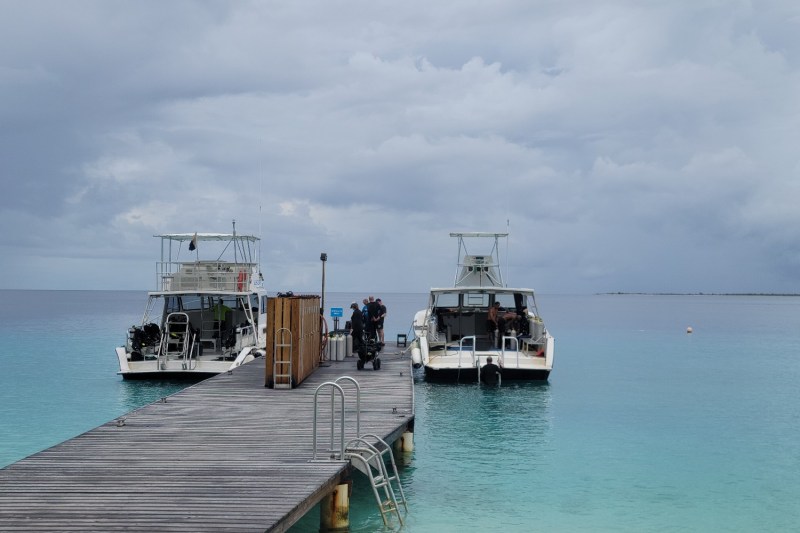
What to do
During my time on this island, I learned just how idyllic Bonaire can be for travelers who want to get out and explore some tropical great outdoors. You can hike to your heart’s content across the island and explore the abundance of public lands. With its famously clear turquoise water, Bonaire truly is the “divers’ paradise.” And with so many open spaces across this island, you can spot quite a few of the region’s famous animals out in the wild.
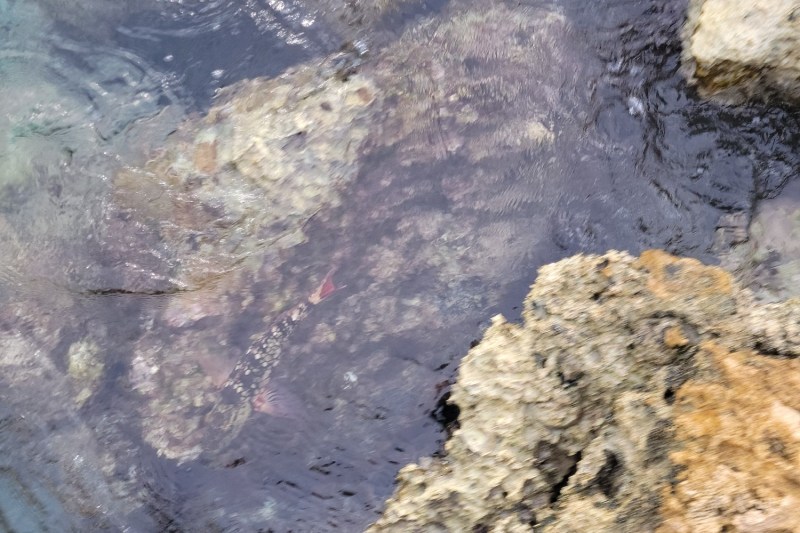
Bonaire National Marine Park
Encircling the entire island and extending to 60 meters (or about 196 feet) in depth, the Bonaire National Marine Park protects some of the world’s healthiest and most diverse coral reefs. Nearly 60 coral species call the waters off Bonaire home, and wildlife like sea turtles, seahorses, and multiple fish species thrive in this rare underwater natural sanctuary.
I’m not even an experienced diver, but I loved jumping into the water and opening myself to new and exciting underwater discoveries. The seawater that surrounds Bonaire is truly this good!
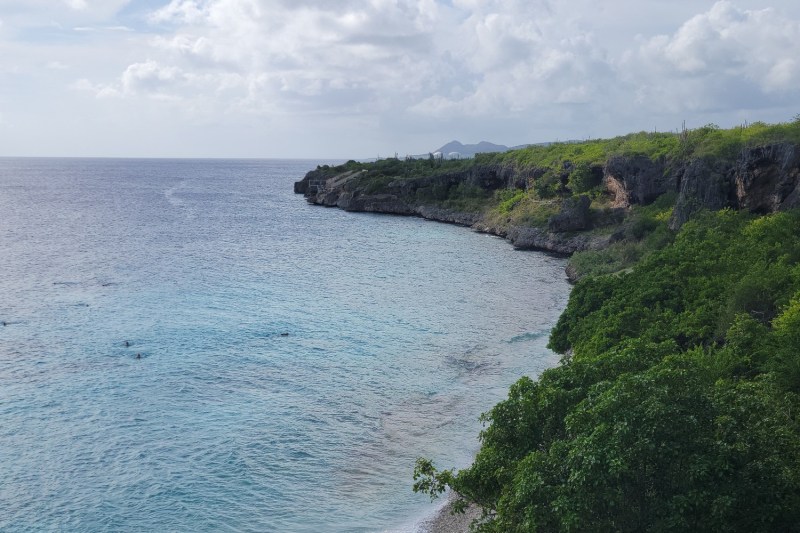
1000 Steps Beach
Though only 67 steps actually separate the bluff top from the beach below, this beach got its name from the divers who complained about how the steps felt more like 1,000 on the way back up. The stunning star coral “pagodas” provide critical habitat for local wildlife like handbill turtles and manta rays, and whale sharks have often been spotted around these parts. Even if you’re not down to dive in, the rocky scenic beach is great to enjoy the vibes and the sunshine.
I loved stopping here to take in the views and enjoy the majestic scenery, and the only downside I ran into at 1000 Steps Beach is that I didn’t have more time to explore this magnificently beautiful beach.

Lac Bay and Sorobon Beach
Tucked away on the southeastern end of the island, this eight-square-kilometer (or about three-square-mile) shallow lagoon makes for the perfect environment for windsurfing, kayaking, snorkeling, scuba diving, and simply enjoying an idyllic day at this picturesque beach. With an abundance of sea turtles — and of birds rarely found just about everywhere else — animal lovers will likely love spending the day out here with their new shelled and feathered friends. Even for those who seek a different kind of “wildlife,” Sorobon Beach and Jibe City are great for kicking back and turning up island style.
I really can’t stress enough the mystical beauty of this stretch of coastline. From the flamingos enjoying their day at Lac Bay to the ethereally turquoise water at Jibe City, I was constantly “shooketh” by the surreal landscape of this (even more) wild side of Bonaire.
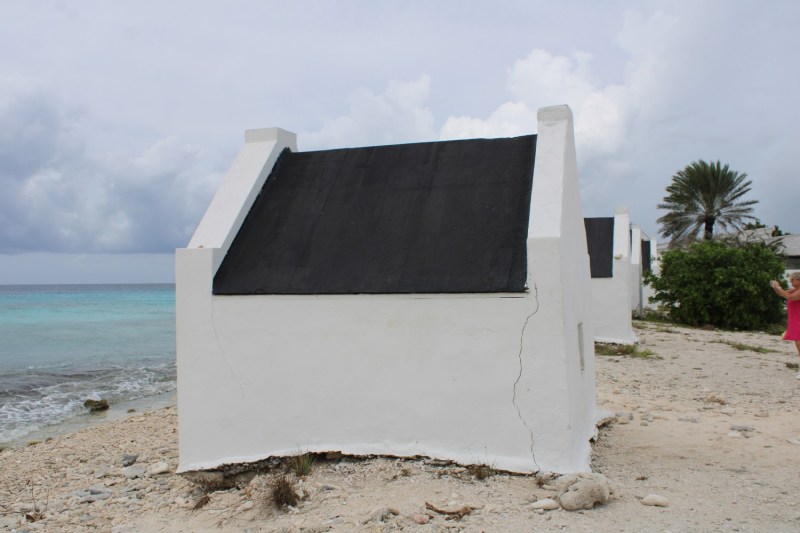
Bonaire Slave Huts
South of Kralendijk and near the famed salt pans, you’ll run into the infamous slave huts. Built a mere dozen years before The Netherlands finally abolished slavery on its Caribbean islands, these huts serve as stark reminders of the horrors of European colonization of the Americas. During the mid-19th century, around 500 enslaved Black Bonaireans were forced to chop salt with pickaxes, shovels, and wheelbarrows in order to fuel The Netherlands’ lucrative salt trading businesses. These people who were forced to work the salt pans stayed in these huts. More recently, the Netherlands National Antilles Foundation (or Stinapa) has worked to restore these huts to preserve this critical aspect of the island’s history.
I understand that this may be quite an emotionally jarring experience for some travelers, but I do ultimately think it’s worthwhile for all travelers coming to Bonaire to drive here. It’s far too easy for way too many of us to only conjure up imagery of lush and luxurious beachside resorts when we think of the Caribbean; this landmark serves as a brutal yet necessary reminder of the painful history that shaped the Caribbean region that so many of us love to visit now.
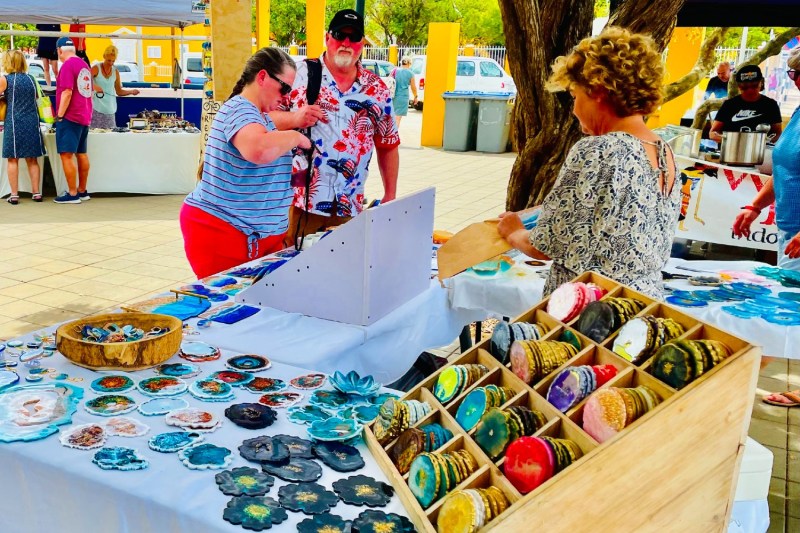
Bonaire Arts and Crafts Cruise Market
Yes, yes, I know that this market is right by the island’s cruise ship port. That said, this open-air market actually features over 40 local artists and creators who make their products right here on Bonaire. They also emphasize sustainability: You’ll find everything from jewelry to sunscreen that’s made with sustainably sourced materials and recycled materials wherever possible. This market is perfect if you’re shopping for souvenirs and/or special gifts for loved ones. You’ll find unique hand-crafted products that you can feel better about stuffing into your suitcase.
Where to stay
Though Bonaire has recently experienced some growth that’s resulted in more hotels and resorts, it’s still far less developed than its fellow Dutch Caribbean islands of Aruba and Curaçao. You won’t find as many large and luxurious resorts here as you will there, but you can find some charming boutique hotels and cozy vacation rentals across the island.
Author’s Note: For this trip, airfare and accommodation were generously provided by CheapCaribbean. However, it in no way exerted any undue influence over the reviews I provide in this guide.
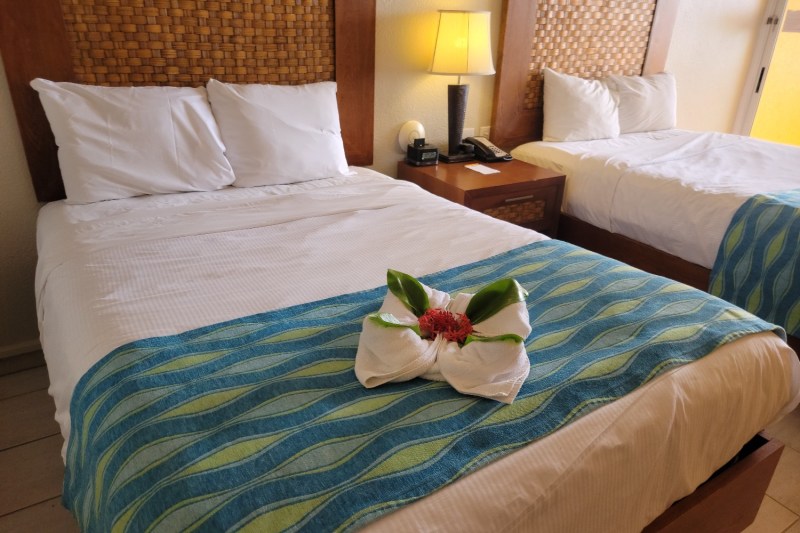
Divi Flamingo Beach Resort and Casino
Whether you want to jump into town, dive into the water, or hop around the island, the Divi Flamingo Beach Resort has you covered. This resort’s on-site diving facilities have everything you need to dive right in; it helps that it’s located right on the shoreline! If you’re more of a landlubber, fear not — the Divi Flamingo Beach is walking distance from Kralendijk’s historic downtown, and it’s easy to drive from here to pretty much everywhere else you want to explore on Bonaire.
The hotel rooms may not look fancy, but they’re fully stocked with all the necessities of life, including decent Wi-Fi internet, satellite TV with multiple channels, a good bed, and a full bathroom. The hotel also has good restaurants on site, and it has beaches and a pool area where you can enjoy as much rest and relaxation as you want.
- Nearest airport: Bonaire – Flamingo
- Time: 3-8 minutes by car
- Distance: 3 kilometers (or about 2 miles)
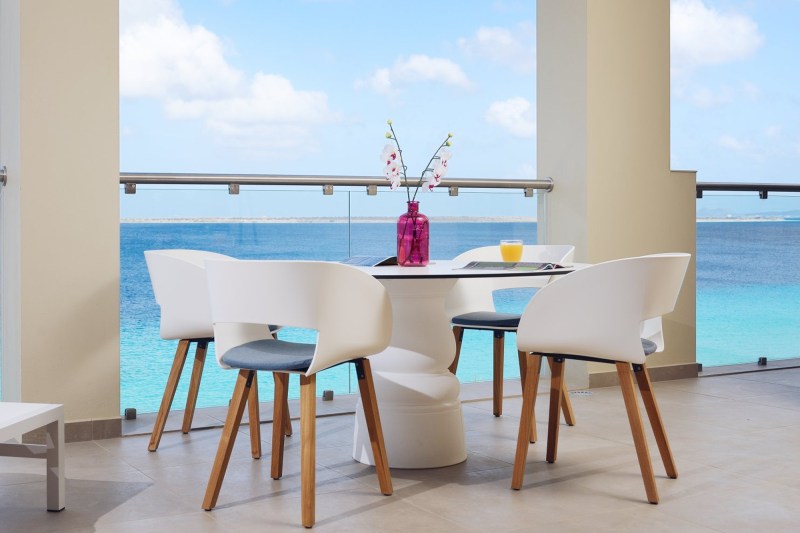
Terramar Bonaire
If you like to feel more like you’re at home while traveling, then you may love Terramar Bonaire. Not only is it right across the street from the Caribbean Sea, but it’s also a short drive away from some of Bonaire’s most famous beaches, including Donkey Beach, Lac Bay, and Sorobon. Terramar is an aparthotel (or an apartment-style boutique hotel), and all 10 rooms have air conditioning, full kitchens with refrigerators and ovens, flat-screen TVs with cable channels, and Wi-Fi internet. The Terramar Bonaire also offers concierge services, airport shuttles, and limited housekeeping services.
- Nearest airport: Bonaire – Flamingo
- Time: 7-10 minutes by car
- Distance: 4 kilometers (or less than 3 miles)
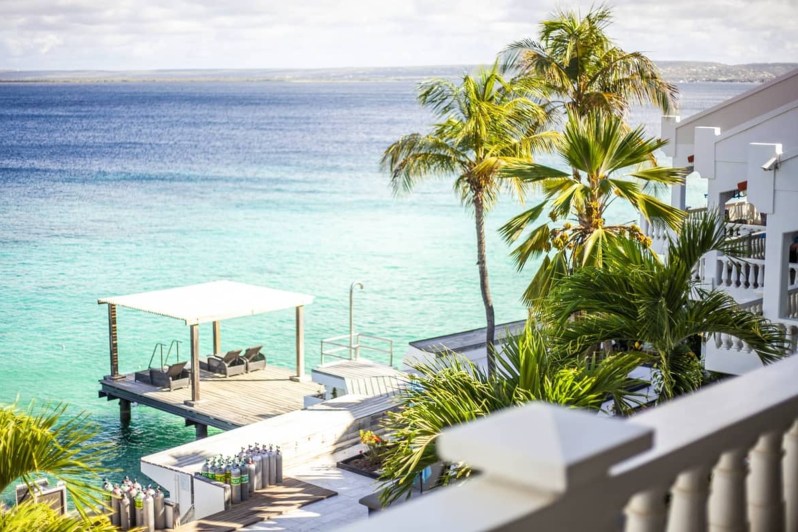
Belmar Oceanfront Apartments
Not only is Belmar on the waterfront, but it’s conveniently close to more beaches, the airport, and plenty of shops and restaurants. This aparthotel has 22 rooms, and all of them come with fully equipped kitchens, furnished patios or balconies, complimentary cable TV and Wi-Fi internet, and on-site amenities like massage service, an outdoor pool, child care (for a surcharge), laundry and dry cleaning, and a computer station.
- Nearest airport: Bonaire – Flamingo
- Time: 7-10 minutes by car
- Distance: 3 kilometers (or about 2 miles)
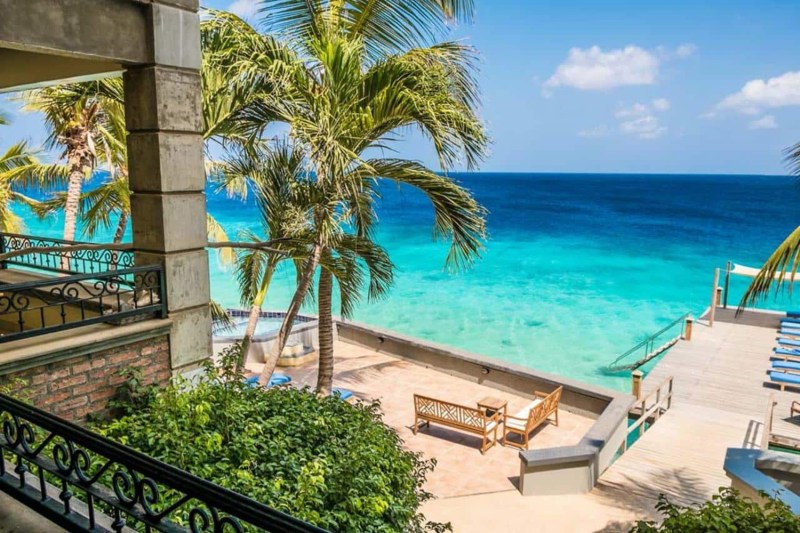
The Bellafonte
If you insist on more creature comforts during your stay on Bonaire, The Bellafonte is hard to beat. This posh beachfront boutique hotel offers spacious studios and suites with private balconies or patios, along with bathrooms that are fully stocked with premium toiletries. The Bellafonte also has an on-site restaurant, on-site diving facilities, a full-service spa, and a concierge desk that can arrange private car rides to just about anywhere you want to go on the island.
- Nearest airport: Bonaire – Flamingo
- Time: 3-5 minutes by car
- Distance: 1.5 kilometers (or less than 1 mile)
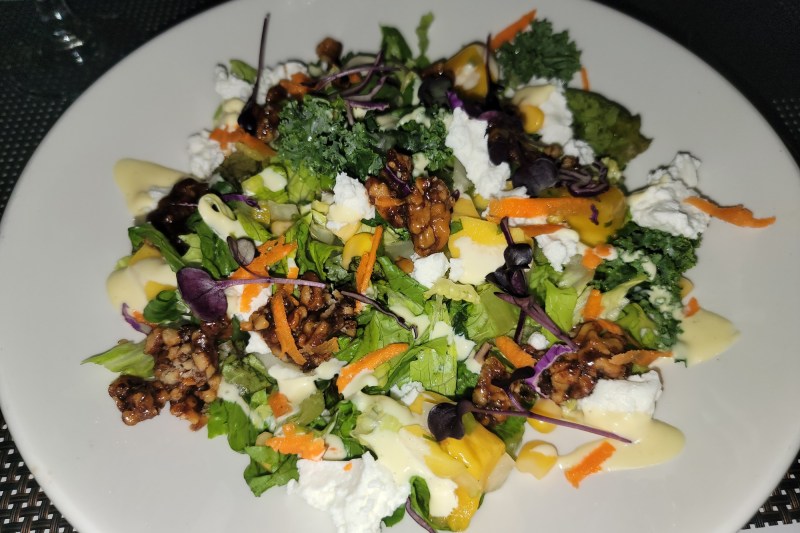
Where to eat
Sure, you can find some familiar foods on Bonaire, but when you’re ready to venture out and try more local grub, Bonaire has plenty for you to taste and enjoy.
Price key
- “$” = budget-friendly or cheap
- “$$” = average
- “$$$” = expensive
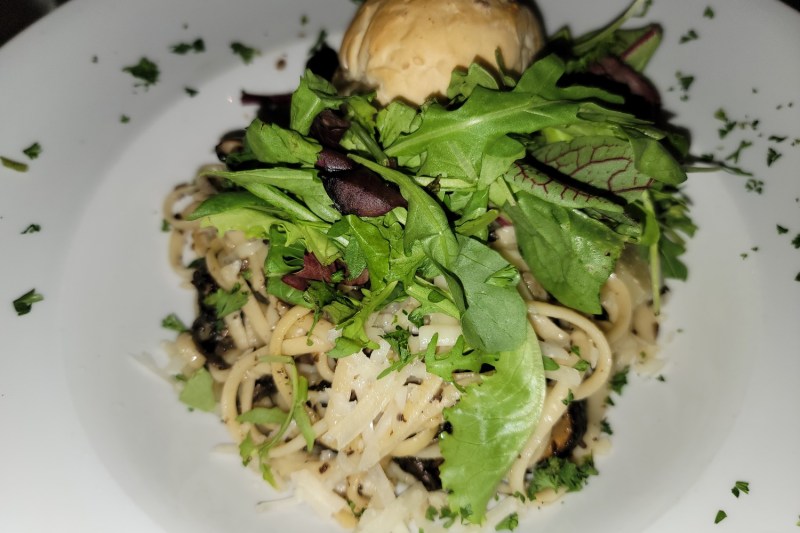
Club Trocadero Bonaire
Located right in the heart of Kralendijk, Club Trocadero offers a great platform to dive right into Bonaire’s nightlife. If you’re hungry, come here to grab some dinner — you’ll find plenty of seafood, a solid selection of premium Argentinian beef, and yummy vegetarian and vegan options. You have a full drink menu jam-packed with affordable beers, wines, and cocktails to enjoy, and the staff is great at whipping up off-menu drinks. For more, stick around for live music and a popping dance floor!
- Best for: Dinner and late night
- $$

Posada Para Mira
Posada Para Mira offers a wealth of authentic Bonairean cuisine, from iguana stew to conch plates and a whole lot in between (including vegetarian and vegan options). Don’t come here looking for fancy stuff, but do come here for tasty grub, amazing views, and very friendly service. Especially if you’re driving into Rincón to take in some sights around town, this is a good spot to stop and refuel.
- Best for: Lunch and dinner
- $$
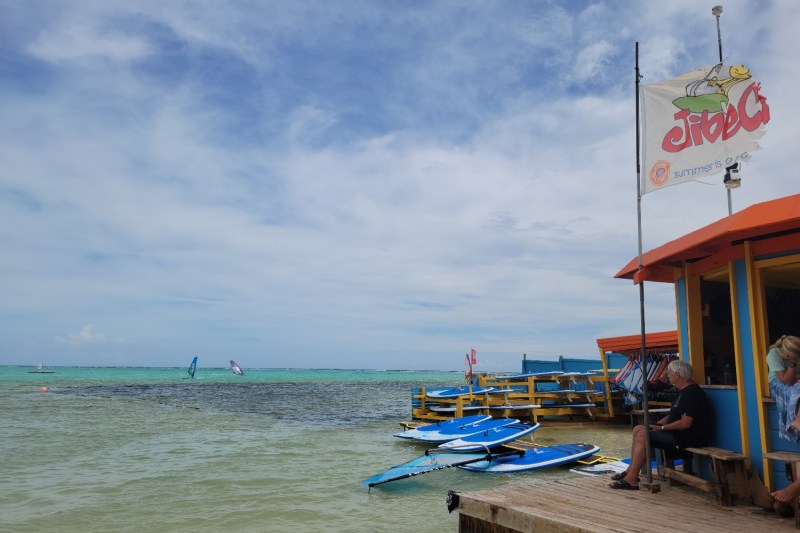
Hang Out Beach Bar at Jibe City
When you simply want to hang out at the beach, you might as well come here, right on the legendary Sorobon Beach. You can enjoy a long and lazy lunch while enjoying the magnificent beach view and sea breeze. It’s a common theme now, but I’ll stress this again: Don’t come here expecting gourmet fare. If you simply want some easy bar food and good drinks, you’ll be happy here. If you’re here to enjoy the beach, jump in the water, and try some windsurfing, you can spend the whole day here (more on this below!).
- Best for: Breakfast, lunch, and early dinner
- $$
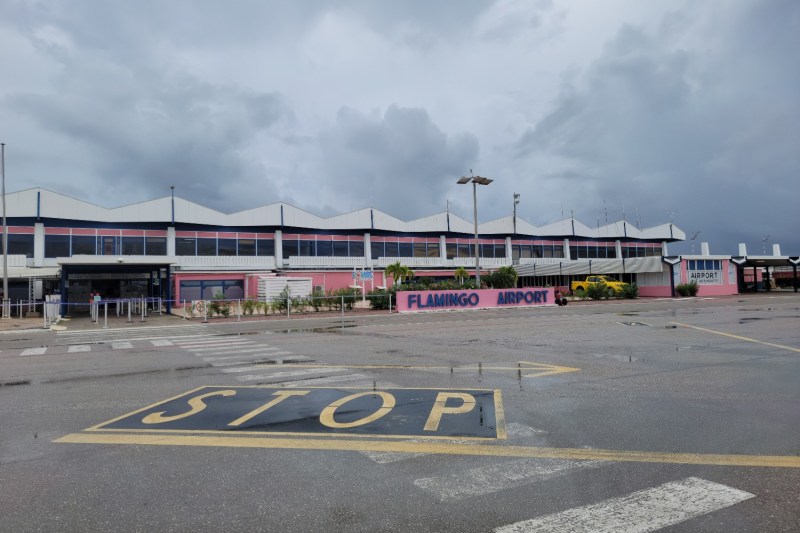
Here are some tips for planning a better trip
How to get here
Fortunately for U.S.-based travelers coming here, Bonaire’s Flamingo Airport now offers nonstop flights to and from Atlanta, Houston, Miami, and Newark/New York City. In addition, you can find direct flights to and from Amsterdam (of course!) and Brussels, as well as the other ABC Islands and Santo Domingo in the Dominican Republic. Unfortunately, there’s currently no inter-island ferry service, but cruise ships can and do dock at the cruise port for day excursions.
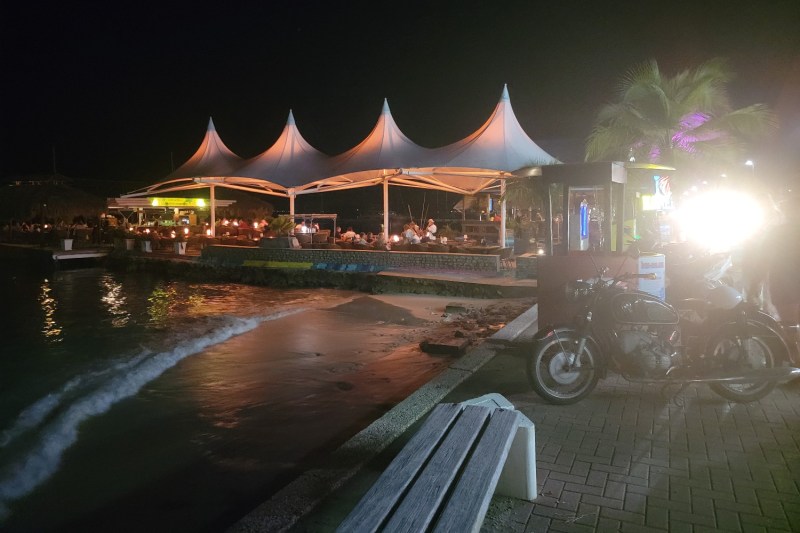
Public safety
Since the ABC Islands are so close to Venezuela, I totally understand why some prospective travelers may feel nervous. However, the U.S. State Department has a Level One advisory for Bonaire as of November 2022. This means that Bonaire is in the safest tier in the State Department’s rankings.
Of course, this does not mean that no crime ever happens here, so it’s still wise to take some precautions. Share your itinerary with a trusted loved one, use a navigation app like Google Maps to familiarize yourself with the area in advance, agree on designated meet-up sites in case you part ways with your group (if you’re traveling in a group), and avoid “dressing like a tourist.”
If you really get into a bind, contact the nearest U.S. Embassy or Consulate for 24/7 emergency aid.
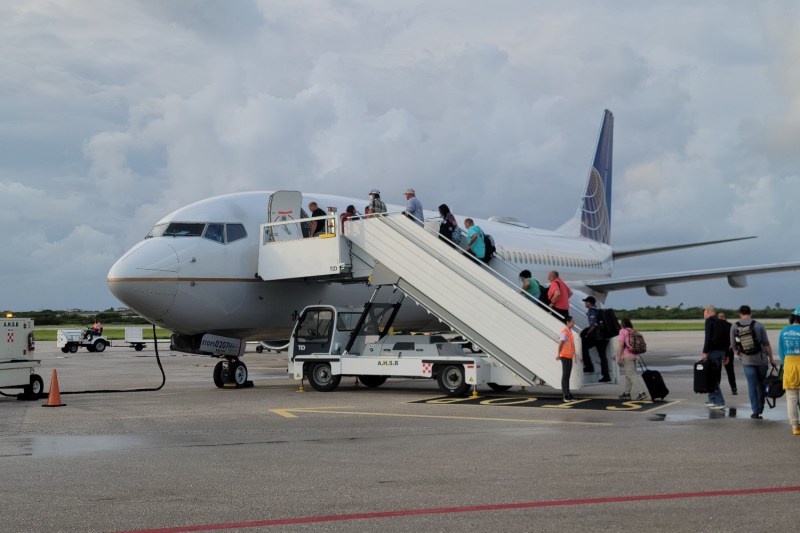
Cross-border travel
Since the Netherlands does not require visas for short-term U.S. travelers, you only need a valid passport and payment of the $75 visitor entry tax to get into Bonaire. If you’re planning to include additional islands and/or countries in your itinerary, you may need to take some additional steps. While the other two ABC Islands do not charge any entry tax, you will need to fill out the respective entry forms in advance for Aruba and Curaçao if you want to visit those islands.
If you’re planning to do a larger tour of most other Caribbean Islands and/or Colombia, you should be perfectly fine with your valid passport. But if you’re considering traveling to Cuba and/or Haiti, you will need to do some homework and legwork in advance to stay on U.S. Customs’ good side.
Then, there’s Venezuela. Since Venezuela and the U.S. have an awkward relationship that remains very much in flux (as of July 2023), you will still need an official visa from a Venezuelan Embassy or Consulate if you’re planning to travel there. You should also keep in mind that it’s probably not a good idea to enter Venezuela from a land-based border crossing, Miami is the only U.S. airport that offers any direct flights to and from Caracas, and it’s still a good idea to have a backup plan in case U.S.-Venezuelan relations worsen yet again.

Public health
Fortunately for travelers, Aruba, Bonaire, and Curaçao lifted nearly all their COVID-19-era travel rules earlier in 2022. Negative COVID-19 test results and proof of vaccination are no longer required for entry. However, travelers are still required to report to authorities if they experience any COVID-like symptoms, and quarantines are still necessary if travelers test positive. Masks are no longer required, but public health authorities still encourage the use of masks and social distancing to keep the islands’ COVID infections low.
Though the ABC Islands no longer enforce the above-mentioned public health safety rules, you can still take action to protect yourself and others:
- Don’t travel if you’re feeling ill
- Get tested when you can
- Get boosted to maximize your COVID-19 vaccine’s efficacy
- Wear high-quality masks — preferably KN95 or N95 grade — in high-risk settings.
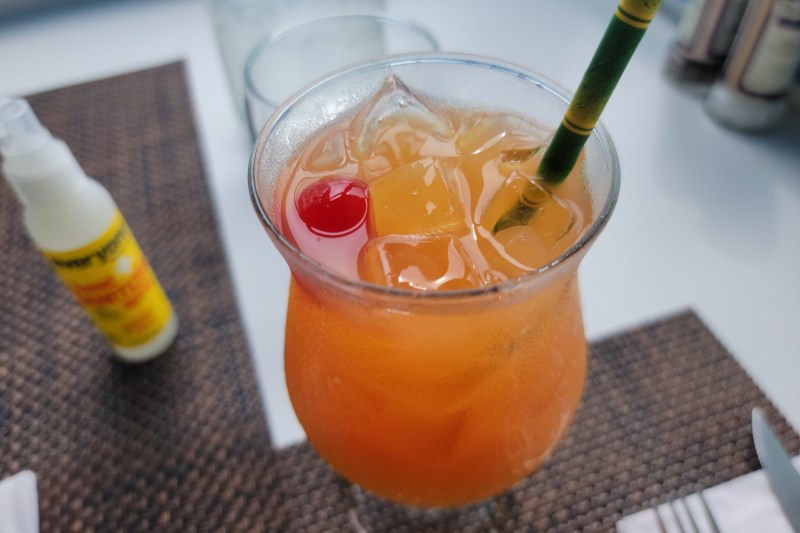
How to save money
Fortunately for bargain hunters and shoestring adventurers, Bonaire is chock full of deals. As we discussed earlier, Bonaire tends to offer a wider array of more affordable lodging than Aruba and Curaçao, and the local dining scene is centered more on local dives and holes in the wall than fine dining establishments. If you’re looking to save more money, you’ll probably want to “go off-campus” more for meals and check out more locals-oriented stores for souvenirs.
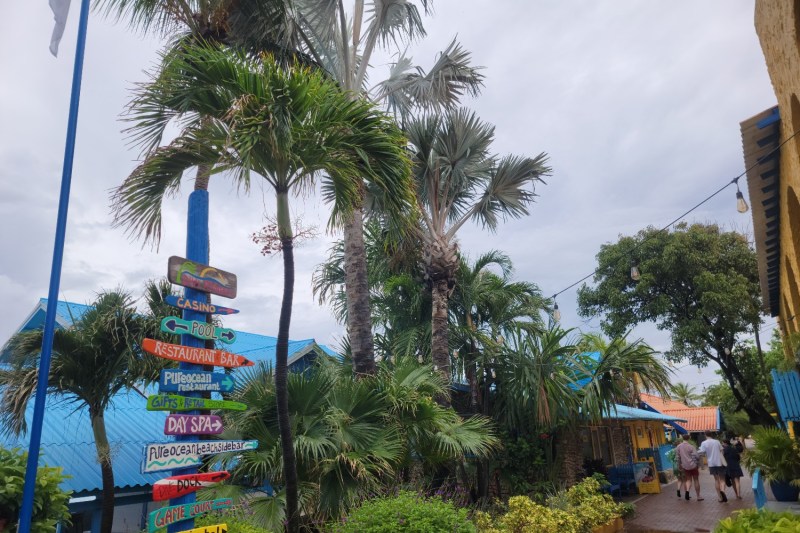
Notes on culture and language
Dutch and Papiamento are the official languages of all three ABC Islands, but English is also widely spoken. Though local attitudes on matters like LGBTQ+ acceptance may not yet match those of the mainland Netherlands in Europe, local civil rights laws have improved in recent years; on Bonaire, they’re on par with those of the mainland because Bonaire has a closer relationship with the Dutch national government than Aruba and Curaçao do.
As the least visited of the ABC Islands, Bonaire is the most pristine and most “down to the earth” island. This doesn’t mean there’s nothing fun to do (see above), but it does mean you won’t find the treasure trove of bars and clubs that you can find more easily on Aruba and on the more popular Caribbean islands. Kralendijk does offer some lively nightlife, but don’t plan on any late-night pub crawls anywhere else on the island.
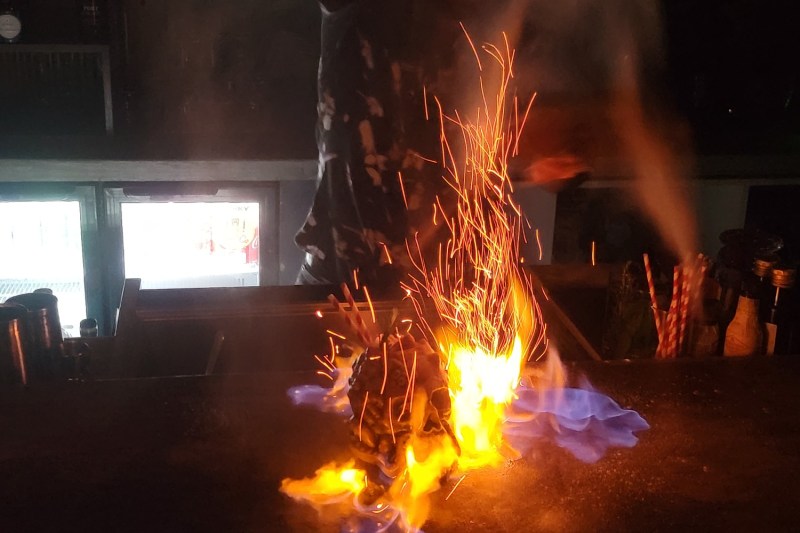
Finally, some thanks
Before we wrap this up, I have to show my gratitude to everyone who helped make this happen. Again, many thanks to CheapCaribbean for arranging all the logistics for my trip to the ABC Islands. In addition to offering deals on ABC Island hotels, CheapCaribbean can hook you up with great hotels and resorts from the Bahamas all the way to Cartagena in Colombia, as well as Los Cabos and Puerto Vallarta on Mexico’s Pacific Coast.
Also, thank you for continuing to read and follow us here at The Manual. If you’re looking to spice up your travel agenda, take a look at the best U.S. cities for foodies, the absolute hottest places on earth, and these tips for surviving any air travel woes that may come your way. As you plan your next journey, we hope you enjoy the ride and dive right into your next great adventure.



